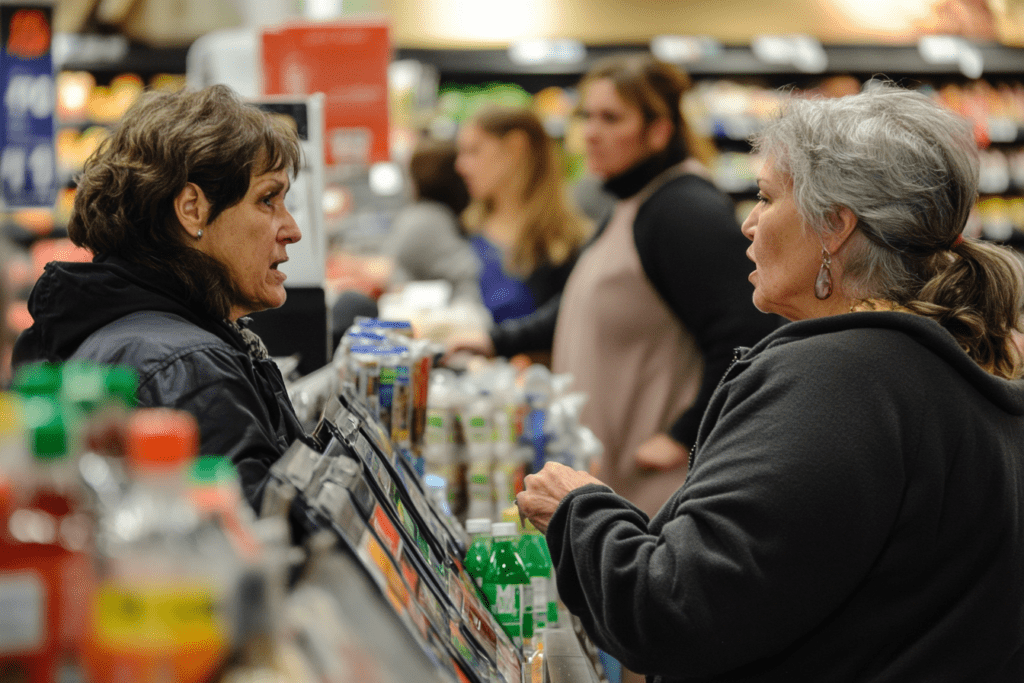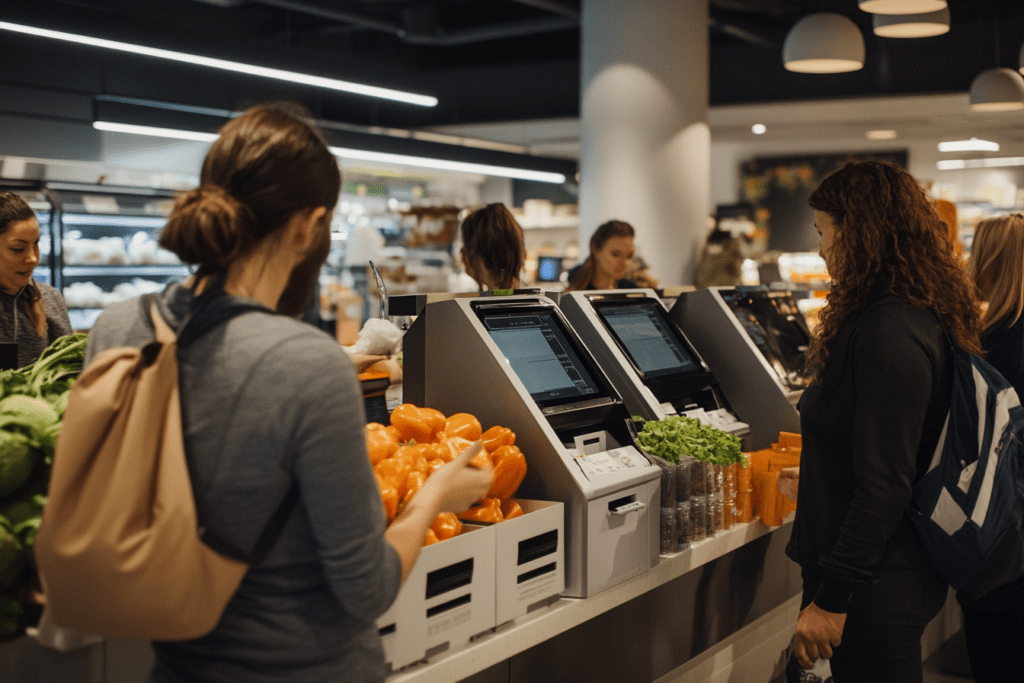Remember when grocery shopping meant friendly chats with your cashier? Those days might be ending. As stores rapidly replace human cashiers with self-checkout machines, customers aren’t just frustrated – they’re fighting back. From abandoned shopping carts to viral complaints, here’s why this supposedly convenient change is causing chaos in grocery stores nationwide.
Nobody wants to be their own cashier

Many grocery stores have ramped up the number of self-checkout lanes, but not everyone is on board with this change. Some shoppers find the technology cumbersome and miss the assistance of a cashier. According to a report from The Street, retailers like Kroger have faced backlash for implementing self-checkout-only policies.
The absence of staffed lanes has led to confusion and delays, especially for those not comfortable with self-scanning their groceries. This shift has left customers yearning for the days when a friendly cashier would handle the process smoothly.
Without the option of a traditional checkout, shoppers are feeling the strain of longer wait times and technical glitches that can occur with automated systems.
The lines are actually getting longer
As stores reduce the number of staffed checkout lanes, lines are growing longer. Customers are spending more time waiting, which defeats the purpose of supposed efficiency gains from self-checkout systems.
In some cases, shoppers have abandoned their carts altogether, unwilling to endure the extended waits. The frustration is palpable, and it’s causing some to reconsider where they do their grocery shopping.
The promise of a quick in-and-out trip is fading, replaced by the reality of congested self-checkout areas and insufficient staff to assist when issues arise.
Theft is surging at self-checkout lanes

An unintended consequence of the self-checkout surge is a rise in shoplifting incidents. With fewer employees monitoring transactions, some customers are taking advantage of the situation.
The increased theft not only affects the store’s bottom line but can also lead to higher prices for consumers. As noted in an article by Mitel, retailers are grappling with the challenges that come with reduced human oversight.
This situation puts honest shoppers in a difficult position, as they may face more scrutiny or delays due to enhanced security measures implemented to combat theft.
Missing those familiar faces at checkout
The move towards automation has also led to a decline in personal interactions that many customers value. The friendly greetings and small talk with cashiers are becoming relics of the past.
For some, these brief exchanges are a highlight of their shopping experience, offering a sense of community and connection. The absence of this human touch can make grocery shopping feel impersonal and cold.
Without the familiar faces at the checkout, customers may feel less loyalty to a particular store, potentially impacting long-term business relationships.
Stores keep ignoring customer complaints

Despite the outcry from shoppers, some retailers seem slow to respond. Customers have taken to social media and feedback forms to express their dissatisfaction, but changes are not always forthcoming.
An article from The Sun highlights how Kroger faced significant criticism over its checkout policies, prompting apologies but little immediate action.
Shoppers feel their voices are not being heard, leading to frustration and a sense that retailers are prioritizing cost-cutting over customer satisfaction.
Some stores are bringing cashiers back
In some cases, sustained customer backlash has forced retailers to rethink their strategies. Kroger, for instance, decided to reinstate staffed checkout lanes in certain locations after acknowledging shopper concerns, as reported by Irish Star.
This reversal shows that customer feedback can lead to positive changes, but it often requires a significant push from the consumer base.
These adjustments suggest that retailers are beginning to understand the importance of balancing technology with personalized service.
What happens when staff disappears
Reducing staff not only affects customer satisfaction but also has broader implications. Employees lose jobs, and the store environment can suffer without enough personnel to maintain it properly.
The lack of staff can lead to disorganized shelves, unattended spills, and a general decline in store upkeep, further diminishing the shopping experience.
These factors contribute to a cycle where dissatisfied customers may choose to shop elsewhere, impacting the store’s profitability in the long run.
The real cost of replacing humans
What would shopping look like if all cashiers were replaced by machines? While technology offers efficiency, it may not fully replicate the nuances of human interaction and assistance.
Customers with special needs or those purchasing restricted items may find automated systems insufficient. The absence of a human touch could make the shopping experience more challenging for many.
It’s worth considering whether the push for automation is worth the potential loss of customer satisfaction and loyalty.


